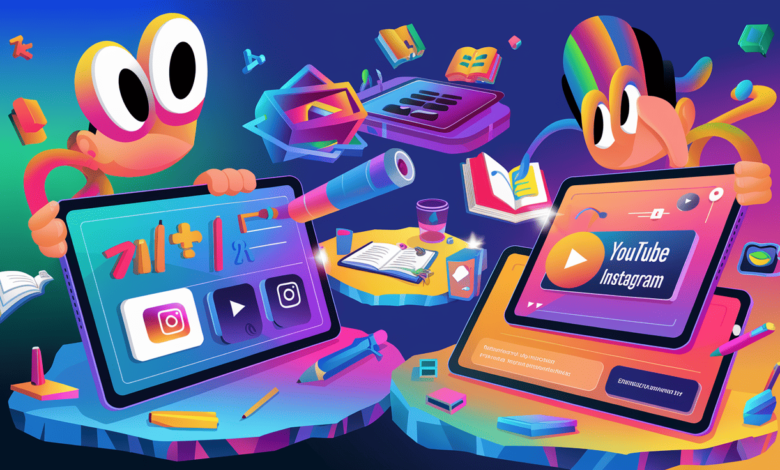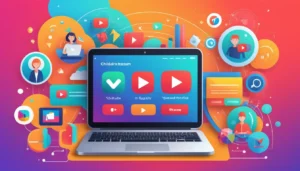
How Can YouTube and Instagram Promote Higher Quality Educational Content to Children
Let’s face it: kids are growing up with screens in their hands. It’s like their world revolves around apps like YouTube and Instagram. But here’s the kicker while these platforms can entertain for hours, they’re also sitting on a goldmine of potential for educational content. Imagine if they could balance the mindless scrolling with brain-boosting videos that actually teach something useful. Cool, right?
But wait. How exactly do we make this happen? These platforms are already jam-packed with everything from silly dance trends to adorable pet videos. So, the big question is: how can we nudge YouTube and Instagram to step up their game and actively promote higher-quality educational content for kids? Folks, let’s dive in.
Why This Matters: The Power of Online Platforms
YouTube and Instagram aren’t just platforms; they’re ecosystems. With millions of users logging in daily, they shape trends, drive conversations, and influence how kids perceive the world. Did you know that as of 2024, YouTube reported over 2.5 billion monthly active users, while Instagram boasted around 2 billion? That’s mind-blowing, isn’t it?
Now, think about this: if even a fraction of this digital real estate were dedicated to quality education, we’d be talking about a massive impact on young minds. And it’s not just about learning math or science it’s about fostering curiosity, creativity, and critical thinking. Makes sense, right?

How YouTube Can Step Up
1. Curated Playlists for Kids
YouTube’s algorithm is a beast, often leading kids down rabbit holes of endless videos. Why not channel that power toward something good? Curated playlists featuring age-appropriate, high-quality educational content could be a game-changer. For example:
- STEM-focused videos: Think coding for kids, simple science experiments, or how space rockets work.
- Art and Creativity: Tutorials on drawing, music lessons, or DIY crafts.
- Life Skills: Short videos on managing emotions, basic cooking, or even financial literacy for tweens.
Check this out: Khan Academy Kids already does an amazing job, but it’s not always front and center. YouTube could create a dedicated “Learn Zone” to highlight channels like this.
Learn More About:👉🏽 What is the difference between quality and quantity on TikTok
2. Partnering with Educational Institutions
Imagine if YouTube teamed up with schools, universities, or trusted educators to create exclusive content. It’d be like having a virtual classroom but cooler. They could even include:
- Weekly live sessions with experts (think astronauts or marine biologists!)
- Interactive Q&A events
- Challenges that encourage kids to apply what they’ve learned (like building a volcano model at home)
3. Improved Content Moderation
Let’s be real not all content labeled as “educational” is actually good for kids. YouTube’s moderation tools could use an upgrade to weed out low-quality or misleading videos. More stringent content guidelines and reviews could ensure that kids get the best of the best.
How Instagram Can Join the Movement

1. Educational Reels and Stories
Okay, we know Instagram is all about quick, snackable content. But how about injecting some learning into those 30-second reels? For instance:
- Fun facts about history or science
- Language-learning tips (like “Word of the Day” in multiple languages)
- Mini tutorials, like how to solve a Rubik’s cube or sketch a cartoon character
2. Interactive Quizzes and Challenges
Kids love a bit of friendly competition, right? Instagram could feature educational quizzes, polls, and challenges that are not only fun but also informative. Picture this:
- A weekly history quiz with prizes
- A geography challenge where kids post stories tagging their favorite landmarks
- Book club highlights for young readers
3. Highlighting Educational Influencers
Did you know there’s a whole world of creators making amazing educational content on Instagram? The problem is, they often get buried under more viral (but less useful) posts. Instagram could spotlight these influencers with dedicated badges or features, making it easier for kids and parents to find them.
Real-Life Examples of Success
YouTube’s “Learn@Home” Initiative
Back in 2020, during the pandemic, YouTube launched Learn@Home to help parents and kids stuck at home. It featured educational videos across subjects like science, math, and art. While it was a great start, imagine if such initiatives became permanent!
Instagram’s #LearnOnInstagram Campaign
Instagram also dipped its toes into education with the #LearnOnInstagram campaign, where creators shared everything from cooking tips to coding basics. The potential here is massive if scaled properly.
Challenges: The Not-So-Fun Part
The Table of Positives and Negatives
| Positives | Negatives |
|---|---|
| Increased accessibility to quality content | Risk of misinformation |
| Encourages lifelong learning habits | Balancing entertainment and education |
| Promotes creativity and curiosity | Potential over-commercialization |
| Builds safe digital habits | Kids might still wander to unrelated content |
Key Takeaways
- YouTube and Instagram hold incredible potential to reshape online learning for kids.
- By leveraging curated playlists, partnerships, and better moderation, YouTube can make education cool.
- Instagram’s bite-sized content format is perfect for fun, interactive learning moments.
- Success stories like Learn@Home and #LearnOnInstagram show us the way forward.
- Balancing entertainment and education remains the biggest hurdle, but it’s worth tackling.
YouTube and Instagram
So here’s the deal: if you’re a parent, creator, or just someone who wants to see kids thrive, start advocating for more educational content on these platforms. Share your ideas with YouTube and Instagram, follow and support educational creators, and, most importantly, keep an eye on what your kids are watching.
Let’s make the internet a smarter, safer place for the next generation. Sound good?
FAQ Section
1. Why is educational content important for kids on social media?
Social media can shape kids’ interests and habits. Quality educational content ensures they’re learning and growing while staying entertained.
2. How can parents find good educational content?
Look for verified channels and creators known for educational material. Platforms often have filters or playlists for this purpose.
3. What role do creators play in this shift?
Creators can design engaging, high-quality content that’s both fun and educational, setting a standard for others to follow.
4. Are there any risks involved?
Yes, misinformation and over-commercialization are potential risks. That’s why moderation and content guidelines are crucial.
5. Can educational content be fun?
Absolutely! Many creators make learning exciting with creative formats like storytelling, challenges, and interactive videos.
6. What can platforms do to promote better content?
They can use algorithms to prioritize quality content, partner with educational organizations, and spotlight creators making a difference.
Written by Taylor Reeves, an advocate for digital education and lifelong learning.






